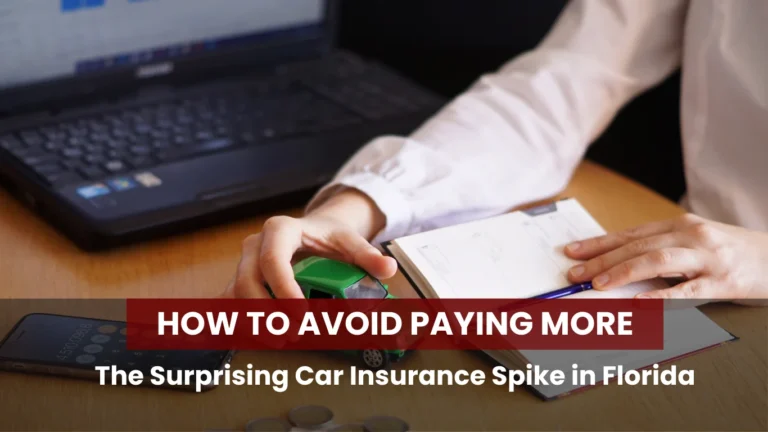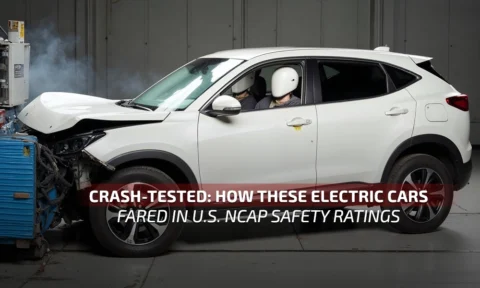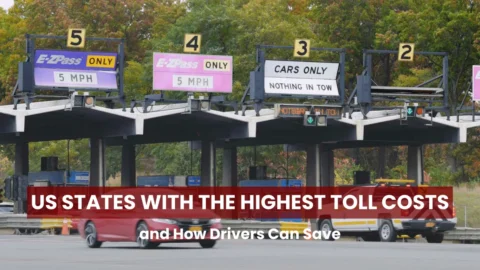Car insurance in Florida isn’t cheap by any stretch of the imagination! But recently, I’ve heard friends say the bills have been climbing at breakneck speed. If you live in the Sunshine State, chances are you’ve been shocked to see your renewal notice. So what’s really driving these car insurance spikes in Florida? And, more importantly, how can you avoid paying more than you should?
In this blog, I’ll break down why rates are climbing, what the experts are saying, and share practical tips to help you keep costs manageable.
Why Florida Car Insurance is So High
Florida car insurance rates have always ranked near the top, but the recent jumps have been unexpected, even for drivers who have lived all their lives in Florida. The spike can be attributed to several factors. These include:
High Accident Rates
With millions of residents and an influx of a large number of tourists every year, Florida roads stay busy. More drivers on the road mean more crashes, which translates into higher payouts for insurance companies, leading to the record Florida car insurance increases.
Litigation and Fraud
Florida has a reputation for a high number of insurance-related lawsuits and fraudulent claims. This adds to the cost insurers have to cover, and those expenses get passed down to policyholders.
Extreme Weather
Hurricanes and flooding aren’t just about property damage. Cars get destroyed in storms, too, driving up comprehensive claims and increasing the risk insurers have to bear.
Population Growth
Florida had the fastest-growing population in the country, particularly between 2021 and 2022. This means there are more cars on the road, naturally raising the risk factor for insurers.
Put all of this together, and it’s no wonder car insurance costs in Florida rank among the highest among all the states.
How Much is the Average Car Insurance in Florida?
If you’re wondering how much the average car insurance costs in Florida, these are the figures:
- According to The Zebra, the average annual car insurance premium in Florida is $2,726, which is about 62% higher than the U.S. average of $1,680.
- Bankrate’s latest research puts the average cost of full coverage in Florida even higher at $3,874 per year as of 2025.
- Similarly, MoneyGeek estimates Florida drivers spend around $2,912 annually, or about $243 monthly, for full coverage.
So what does this mean for you if you live in Florida? It means you have to shell out more on Florida auto insurance premiums than the rest of the country does. Families with multiple cars will find these numbers even harder to digest. I’ve spoken with drivers in Miami who say their annual premium is almost equal to a month’s rent.
How To Lower Car Insurance in Florida
While the state of affairs with Florida car insurance in 2025 is dire, there is a silver lining. While you can’t control weather or traffic accidents across the state, there are several steps you can take to keep your car insurance from inflating.
1. Shop Around Regularly
Don’t just auto-renew your car insurance in Florida every year. Rather, get quotes from at least three different providers and compare costs. Use any of the comparison sites to make this easier. It will also tell insurers in Florida that drivers are shopping around more aggressively for better prices.
2. Bundle Policies
If you own a home or rent an apartment in Florida, bundling your car insurance with your homeowner’s or renter’s policy can shave hundreds off your yearly premium.
3. Raise Your Deductible
Opting for a higher deductible can lower your car insurance premium, but make sure it’s an amount you can realistically cover in the event of an accident.
4. Improve Your Driving Record
Tickets and accidents raise your insurance rates fast. Consider enrolling in a defensive driving course approved in Florida. It can sometimes help lower your premium by up to 10%.
5. Take Advantage of Discounts
Ask your insurer about discounts for good grades (applicable to students), safe driving, military service, or even low annual mileage. Some insurers do offer such discounts.
6. Reassess Your Coverage
Do you really need collision coverage on a car that’s 15 years old? Trimming unnecessary insurance coverage could save you money.
Why Florida Drivers Need to Be Extra Cautious
Unlike most states, Florida doesn’t require drivers to carry bodily injury liability coverage. Instead, it relies on Personal Injury Protection (PIP), which has a no-fault rule. This means your insurance pays for your medical costs after an accident, regardless of who’s at fault.
While PIP may sound like it keeps things simple, it’s part of the reason for the Florida insurance rate hikes. Fraudulent PIP claims have been rampant, and insurers build those costs into your premium. That’s why being proactive about your insurance strategy is even more important in Florida than in most other states.
Tips From Insurance Experts
If you are looking to the experts for advice, most point out that insurers in Florida face higher risks than in most parts of the country, and drivers should adapt accordingly:
- Check financial ratings of insurers. Smaller companies sometimes offer great deals, but you want to be sure they can pay out if a storm or flood leads to mass claims.
- Consider usage-based insurance. Some insurers now offer pay-as-you-go or telematics policies that charge based on how safely you drive. If you mostly stick to short commutes, this could save you a chunk of money.
- Don’t ignore the credit score impact. In Florida, insurers are allowed to use your credit score when determining premiums. Managing your credit can directly lower your insurance bill.
The Bottom Line
Car insurance in Florida has always been expensive, but the recent surge in auto insurance rates can be viewed as a wake-up call. From hurricanes to fraud, the state faces unique challenges that have caused Florida insurance premiums to spike. However, if you shop around for the cheapest car insurance plans in Florida, take advantage of discounts offered, and keep your driving record clean, you can protect yourself to an extent from paying more than what’s necessary.
I’ve learned the hard way that staying passive only makes the pain worse. Being proactive is the best way forward and can save you hundreds of dollars on insurance premiums every year.
For more tips, comparisons, and guides on cars and car ownership and beyond, head over to Ask About Cars.





